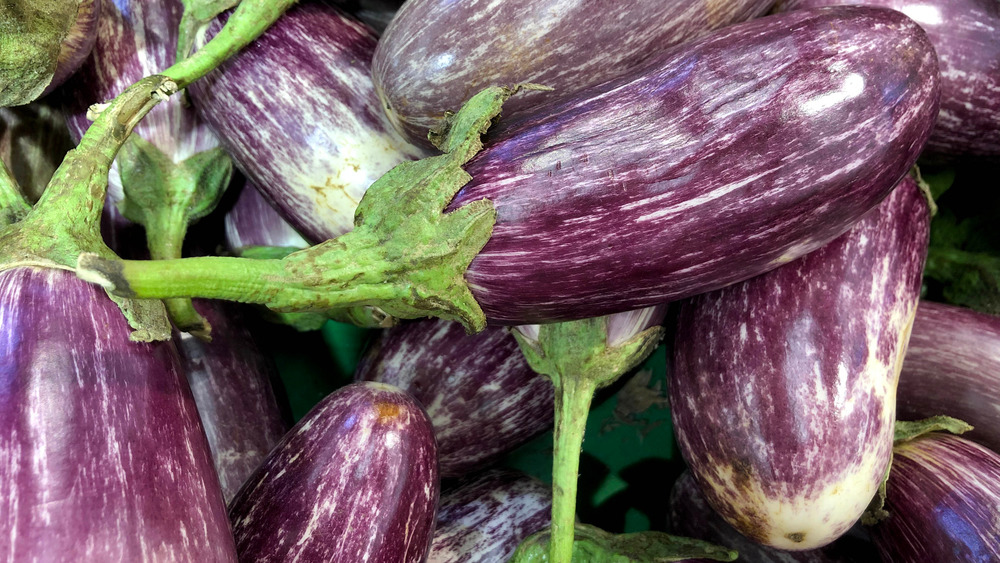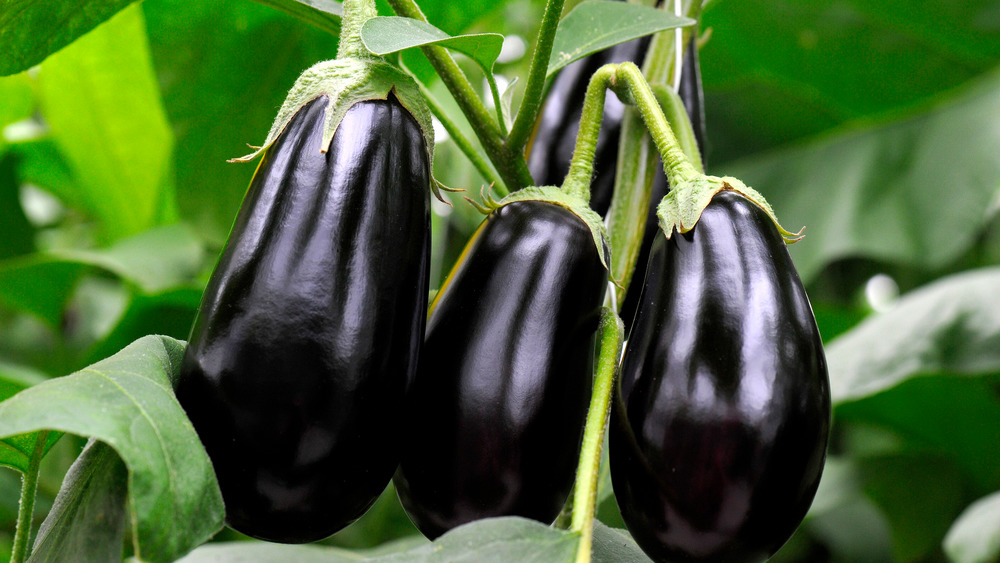The Surprising Truth About Eggplant
There are a surprising amount of fruits that we think of as vegetables, with the most famous probably being the tomato. Other fruits that we tend to see as vegetables include peppers, cucumbers, peas, olives, and even avocados, among quite a few others (via Business Insider). Eggplant also falls into this category. Perhaps that is why they go so well with tomatoes in Italian dishes like eggplant parmesan.
If you're wondering how eggplant could possibly be a fruit, it all comes down to how fruits and vegetables are classified. There are two classification methods. The first is culinary in which fruits and vegetables are separated by taste. Fruits are sweet or sour and vegetables are more mild and savory, according to Better Homes and Gardens. The other classification is botanical. Fruits grow from the flower of a plant and contain seeds. Vegetables, on the other hand, grow from other parts of the plant and have roots, stems, and leaves. Eggplants grow from a plant's flower and have seeds, which botanically, make them fruit.
Even weirder, eggplant is actually a berry
Odder yet, eggplants are actually classified as a berry within the family of fruits. Berries are fruits that do not contain a pit and grow from a single female flower. Though the first fruits that might come to mind when you think of berries might be blackberries, blueberries, and strawberries, there are other fruits you wouldn't suspect to be berries — including eggplants. Other berries include tomatoes, grapes, and even bananas, according to Thrive Cuisine.
If you are struggling to understand how eggplants could be berries, you are not alone. Eggplants are berries because they fit the description of growing the way and with the structure that other berries do. If you slice open an eggplant, you won't find a pit. As the definition states, the berry grows from a single flower that blooms from a stem too, which you pick the fruit from once it is ripe (via Harvest to Table).
So, the next time you go to cook an eggplant, take notice of its anatomy. You just might be surprised to find that it really does fit the fruit and berry classifications.

